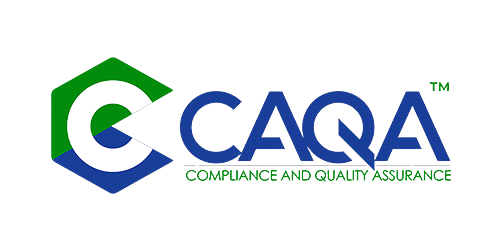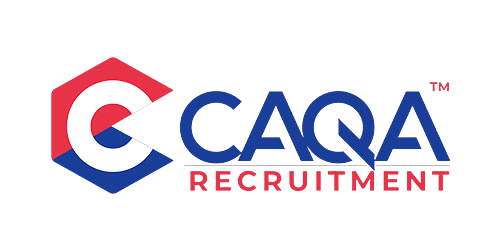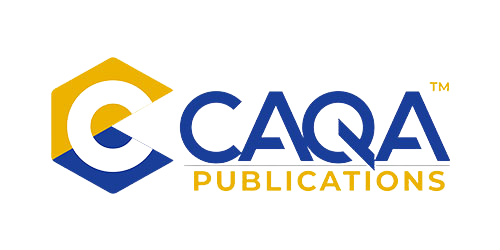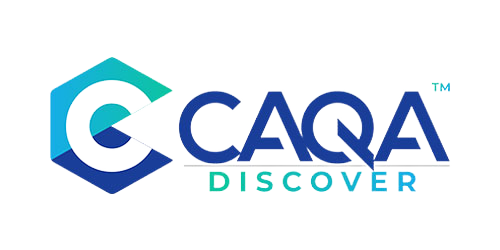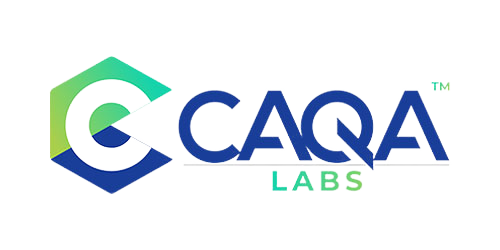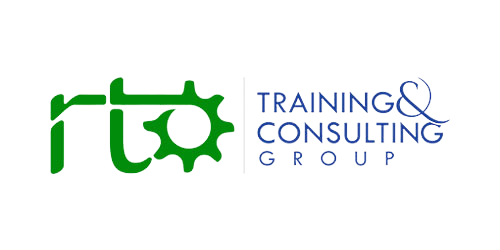The 2025 Outcome Standards and ASQA’s accompanying FAQs and Practice Guides anchor a simple proposition that now touches everything from logos on flyers to the signatures on testamurs: students, employers, funders and regulators must be able to see—unambiguously—who the RTO is, what the RTO is responsible for, and where any third party begins and ends. The cultural change is as important as the compliance change. For years, sector practice tolerated ambiguous co-branding, “helpful” partner marketing and one-off exceptions in certification layouts. Under the 2025 regime, the presumption is reversed. Branding and documentation exist to make the RTO’s legal accountability unmistakable; any arrangement that risks confusion must be redesigned or documented to remove doubt. The result is a more transparent marketplace for nationally recognised training, but also a new operating standard for every RTO that uses brokers, enterprise partners, subcontracted trainers, schools, or pathway providers.
The regulatory text that many teams have raced to interpret—ASQA’s 2025 Standards FAQs, the Practice Guide on Information and Transparency, the Practice Guide on Accountability, and the Credential Policy materials—converges on a single organising principle. Students must always be told, and able to tell, which RTO holds the registration, who will issue their AQF certification, and how any third party participates. This is not a marginal point: it expresses the regulator’s shift to outcomes-based assurance. If the outcome sought is informed choice and traceable responsibility, then logos, URLs, provider codes, testamur headers, induction scripts, and enrolment emails are all evidence artefacts. Together, they must add up to a coherent story: the RTO is the responsible issuer; the third party supports delivery, marketing or assessment within a written agreement; and the student knows the difference.
That interpretation is not merely a reading of the guidance; it is reinforced by direct advice from ASQA officers responding to provider enquiries. In one documented exchange, a Service Delivery Officer confirmed three elements that have generated lively debate across compliance forums. First, a third party may use RTO-branded materials where those artefacts were provided by the RTO, remain unmodified, and clearly identify the RTO—ideally including the provider code. Second, jointly developed materials can carry dual branding, provided the dual identity does not obscure that the RTO is the accountable entity. And third, AQF certification can carry dual branding only where students are explicitly informed that the RTO is the issuer and the third party is not, and where the third party is not using the NRT logo or issuing certification outside the written agreement. In the same response, the officer reiterated that any third-party advertising must include the RTO’s registration code or a direct link to the organisation’s record on the National Register, and that the RTO must not allow a third party to use the NRT logo or to present itself as the RTO. The message is unambiguous: dual branding is permitted, but only when it serves transparency, not theatre, and only when students have been clearly told—in writing—what those brands mean for their credentials.
For many organisations, the most consequential change is the one that appears smallest on paper: marketing and web collateral created by partners must read like RTO artefacts, not partner artefacts. That means the provider code is present and prominent, the RTO’s full legal or trading name appears in the places a prospective student will actually look, and the call-to-action does not route students through a brand experience that hides the issuer. If partners post social ads or microsites, those placements carry the RTO identifier or link back to the National Register entry for the RTO, not to a generic landing page that leaves the brand relationship implied. In practice, this requires a simple governance loop that many RTOs do not yet operate: pre-approval of partner artefacts; a version-controlled library of RTO-issued, partner-safe templates; and a quarterly sweep of public channels to capture screenshots for the audit file. The higher bar in 2025 is not volume of paperwork but quality of evidence. Auditors are asking, “Would a reasonable student be clear who the RTO is and who will issue their certificate?” If the answer is “yes” from the artefact itself, you are in safe territory. If the answer requires an internal explanation, you are not.
Certification is the second flashpoint. Who can appear on a testamur, and how? The current interpretation does not prohibit dual branding on AQF certification, but it places conditions on it. The RTO must be the issuer; the NRT logo belongs to the nationally recognised training product and is not a partner asset; and the layout must not create the impression that a third party conferred the qualification. The student must be informed—preferably at enrolment and again before issuance—that the RTO issues the certification. From a design perspective, this is solvable. A certificate can display the partner’s name or logo in a secondary position, accompanied by text that states the partner’s role (for example, “training delivered on behalf of [RTO] under a third-party agreement”). The primary banner, issuer field, signature, and provider code belong to the RTO. Done this way, dual branding signals collaboration without diluting accountability. The same discipline must flow into statements of attainment, digital badges and verification letters. Where RTOs use digital credentialing platforms, the issuer organisation in the metadata should match the RTO’s TGA listing, while any partner attribution sits in the description field.
Everything hinges on the written agreement, which now carries more than commercial terms. It is the blueprint auditors will use to understand the arrangement. A compliant agreement describes scope (delivery, assessment, marketing), sets branding boundaries, obliges the third party to use only RTO-approved artefacts, and commits the parties to inform students in writing about the role separation. It allocates recordkeeping responsibilities and specifies that all AQF certification is issued by the RTO. It references withdrawal rights where marketing breaches occur, sets notification requirements for complaints and regulatory contact, and aligns to the RTO’s risk and continuous-improvement system so that partner performance feeds governance. In 2025, “we have a contract” is insufficient. What matters is whether the contract has operationalised transparency, whether the parties do what it says, and whether the RTO can show that students actually received, and understood, the disclosures the agreement promises.
These expectations surface a common objection: “But the legislation doesn’t say that.” It is true that some clauses in the legislative framework are high-level, and sector custom has long filled in the details. The 2025 FAQs and Practice Guides are the regulator’s mechanism for harmonising that custom with the law’s intent. In the Service Delivery Officer’s response cited above, the spirit of the regime is explicit: students must not be misled, the RTO’s branding must not conceal third-party involvement, and the third party must not trade on the NRT logo or issue certificates beyond the agreement’s boundaries. Where past advice or sector habit tolerated ambiguity, the 2025 materials and responses remove it. Operational precedence now sits with transparency-first artefacts and agreements—and it is those artefacts that will decide audit outcomes.
Gmail - RE_ a consultant _ unde…
What does this mean day-to-day? First, branding governance becomes a live function, not a file note. Your brand kit should include a partner-use chapter: exactly which logos, in which sizes, on which backgrounds, with which disclaimers, and in which document types. Provide your partners with unmodifiable PDFs and locked design files for core artefacts—course flyers, enrolment forms, induction packs, web blocks—so “use without modification” is practical, not punitive. Maintain a single source of truth for provider name, code, CRICOS number (where relevant), TEQSA references for dual-sector providers, and National Register links. The goal is not to restrict partners but to remove the friction and risk that comes from improvisation.
Second, marketing approval must be proportionate and traceable. If a council brochure, a school newsletter, a Facebook carousel and a short TikTok ad are all active at once, the RTO should be able to show who approved what, when, and against which template. Capture the live URL or physical copies, file them under the partner record, and tag them to the relevant agreement clause. That way, when an auditor asks for examples of compliant partner marketing, you can produce artefacts with provenance. A companion register of takedowns and corrections demonstrates vigilance and improvement. In an outcomes-based audit culture, the existence of small errors is less damaging than the absence of a system that finds and fixes them.
Third, student disclosure must be designed into the journey, not stapled to the back of a handbook. Put the issuer statement and provider code in the offer letter. Confirm the statement in the LMS welcome module. Read it aloud at induction. Include it on the fee schedule and on the training plan. Where a school or employer hosts the induction, script the host to read the disclosure verbatim and keep a signed attendance sheet or a short e-consent acknowledging that the student understands which RTO is responsible for training, assessment and certification. Your enrolment system should log that the disclosure was presented and acknowledged. When a complaint arises, you will be grateful for the paper trail.
Fourth, internal and partner staff must be trained to speak the same language. The most common cause of student confusion is not a rogue logo; it is a well-meaning trainer or marketing officer who says, “We’ll issue your certificate,” when “we” is a partner, not the RTO. Script the sentence. Practise it. Place it on lanyard cards. Alignment in everyday speech is as much a part of compliance as alignment on letterhead.
Fifth, digital presence needs the same discipline as print. Partner microsites should either live inside your domain or carry the RTO identifier and a visible link back to the National Register. Social posts should carry the RTO name and provider code in the caption or in the first visible comment. Link-in-bio landing pages should replicate the disclosure. If a partner is running lead-gen ads that don’t identify the RTO until the second click, shut them down or rebuild them. “Funnel-first” marketing does not trump “transparency-first” regulation.
Sixth, certification workflows must make role separation impossible to miss. In a dual-branded design, the issuer line, authorising signature and provider code must be in the RTO section. Where digital signature platforms are used, the issuer organisation should be set at the account level to the RTO, not per-document by a partner staff member. Automated emails that accompany digital issuance should state that the certificate was issued by the RTO and provide a verification link hosted by the RTO. If partners host graduation events, MC notes should include the issuer disclosure. None of this is a bureaucratic flourish; it is evidence that students were told, and that the RTO controls issuance.
Seventh, agreements and evidence must connect. Too often, RTOs have artful agreements but can’t demonstrate operation. Build a partner dossier that includes the signed agreement, the brand kit and approved templates; the student disclosure scripts; a quarterly pack of live marketing artefacts; induction slide decks and attendance records; examples of issued certificates; and a log of any corrections, complaints or regulator contacts relating to the partner. Your internal audits should sample those dossiers. Findings should feed the continuous-improvement board. When your governance group meets, it should see a dashboard of partner transparency indicators: percentage of current artefacts using the latest template; number of disclosure acknowledgements captured; time to correct a non-compliant post; and the status of any corrective actions from the last partner review.
Eighth, map third-party branding to other obligations that sit close by. For CRICOS providers, the ESOS framework requires specific information to be presented to prospective students; don’t let partner artefacts drift from those disclosures. For funded programs, contract schedules often replicate or extend branding and issuer rules; align your partner pack to those schedules so you are compliant with ASQA and exposed to your funder. For schools and higher education partners, remember that state VET in Schools policies and TEQSA rules come with their own transparency requirements; joint ventures should harmonise to the strictest standard to avoid corner-case confusion.
Some practitioners argue that allowing dual branding on testamurs “walks back” earlier, stricter readings. The better view is that dual branding is a tool that can serve or subvert transparency. As the Service Delivery Officer’s email notes, the use of co-branding is acceptable only where it does not mislead or blur legal responsibility. Placed in that frame, the supposed contradiction disappears. A certificate can acknowledge a partner’s role without letting the partner impersonate the issuer. A brochure can celebrate a collaboration without hiding the RTO. The system is not forbidding partnership; it is demanding accountability.
There are predictable failure modes to watch for. One is “brand-washing,” where a national enterprise partner asks to foreground its logo to the point that the RTO’s identity looks like a small supplier’s watermark. Resist the temptation; if the design creates a reasonable risk of confusion, it is non-compliant even if the contract is immaculate. Another is “template drift,” where a partner exports your InDesign file and starts “minor updates.” Provide locked PDFs and web blocks precisely to avoid this pattern. A third is “platform sprawl,” where partners stand up new landing pages, event tickets or social handles faster than your governance loop can track them. Inventory your partner’s digital estate at onboarding, capture admin access where appropriate, and schedule a quarterly crawl to discover strays.
On enforcement risk, ASQA’s spotlight on marketing and advertising has bite. Misleading claims, absent provider codes, improper NRT logo use, and confusing issuer language are all well-travelled pathways to findings. The 2025 regime does not require perfection, but it does require systems that detect and correct issues. If your artefacts show that you informed students, controlled templates, and fixed mistakes quickly, you will look like an organisation that understands the purpose of the rules. If you discover issues only when a student complains or a competitor reports you, you will look like an organisation that delegates accountability to partners and then blames them when it frays.
The governance link back to Outcome Standards 4.1–4.4 is deliberate. Leadership accountability means the Board or governing persons understand and oversee third-party risk; role clarity means staff and partners can describe their boundaries without reading from the contract; risk management means marketing risk is on the register with owners, controls and review dates; and continuous improvement means transparency metrics are reviewed, actions are taken, and the effect of those actions is tested. In an outcomes system, culture shows up in small artefacts and repeated behaviours. A partner’s Instagram post is a governance artefact. So is the way your trainer introduces the RTO at the first class. So is the footer on a statement of attainment.
Where to begin if you are rebuilding your approach? Start with a narrative you can explain to a student in one sentence: “You are enrolling with [RTO], provider code [XXXX]; [Partner] will deliver some services on our behalf; we issue your certificate and are responsible for quality and compliance.” Bake that sentence everywhere. Next, simplify the toolchain. One brand kit. One template library. One disclosure script. One approval workflow. One quarterly audit pack per partner. Then train for consistency. Run a 45-minute session with partner staff and your own frontline team to practise saying the sentence and to walk through the artefacts. Finally, measure what matters. The best indicator that you are meeting the standard is not how many documents you have; it is how quickly you can produce a handful of live artefacts that would make sense to a stranger and still tell the truth.
The sector conversation will continue, not least because some providers feel the interpretation departs from past advice. But the logic of outcomes regulation is hard to contest. If the goal is to prevent students from being misled and to cement issuer accountability, then clarity in brand and voice is the right lever. The Service Delivery Officer’s phrasing is a good touchstone: the third party must not attempt to market itself as the RTO; the RTO’s branding must not be used to conceal a third party; the student must be familiar with the RTO’s branding as the issuer; and the NRT logo is not a partner toy. Your job as an RTO is to make those sentences demonstrably true across your ecosystem.
In the end, transparency is not a constraint on partnership; it is its passport. Industry and community partners bring reach, context and opportunity; RTOs bring authority, quality systems and the legal licence to issue. When each party is visible for what it is and does, students can make informed choices, and employers can trust the credential. The 2025 guidance simply asks providers to codify that truth in the artefacts students see and in the agreements partners sign. Build your narrative, harden your templates, script your speech, prove your issuer role, and keep your evidence live. Do that, and third-party arrangements will survive the audit and serve their purpose: more Australians learning for real jobs, with credentials that are clear, portable and trusted.










